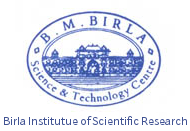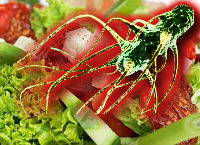Pathological Factor
Adenoviruses types 40 and 41.Only the adenovirus types 40 and 41 induce gastroenteritis, with most cases involving young children.They were identified in food such as shellfish. Foodborne transmission is not documented.
Disease
Some human volunteer studies of astrovirus infections have concluded that the virus is of relatively low pathogenicity in adults. Astrovirus diarrhea gene-rally is more mild than diarrhea due to rotavirus, and significant dehydration and hospitalization does not often result. Deaths related to astrovirus infection are very rare but have been reported. The illness differs from the NLV in that the incubation period is longer (3-4 days), the duration of illness is longer (often lasting for 7-14 days) and vomiting is less common, with diarrhea being the predominant symptom. In addition, the very young (<1 year) appear to be the most susceptible group, whereas NLV affect all age groups.








